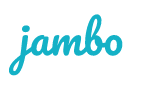
¿Qué es la cartografía de las partes interesadas?
Stakeholder mapping is the process of identifying and visually organizing different types of stakeholders, and is one part of stakeholder analysis. Stakeholders are individuals, groups, or organizations that are interested in, affected by, or have the ability to influence a project or business.
El mapeo de las partes interesadas prioriza a las partes interesadas, adapta las estrategias de comunicación y participación y garantiza que todas las partes interesadas sean tenidas en cuenta a lo largo del ciclo de vida del proyecto. Se trata de una representación visual, en forma de gráfico o matriz, que ayuda a comprender a las partes interesadas y cómo les afectan o pueden influir en los resultados del proyecto.
Lo que cubrimos en este blog:
- Stakeholder mapping techniques - Key steps
- ¿Para qué sirve la cartografía de las partes interesadas?
- ¿Por qué es importante el mapeo de las partes interesadas?
- ¿Quién debe realizar el mapeo de las partes interesadas?
- Cómo elaborar un mapa de las partes interesadas
- ¿Cuáles son los cuatro pasos para elaborar un mapa de las partes interesadas?
- ¿Qué hacer una vez finalizado el ejercicio de mapeo de las partes interesadas?
¿Cuál es la mejor herramienta para cartografiar a las partes interesadas?
Una vez identificadas las partes interesadas, hay que clasificarlas en grupos para orientar la estrategia de participación.
A popular stakeholder categorization technique is a stakeholder engagement assessment matrix, a tool for analyzing and categorizing stakeholders based on their current and desired levels of engagement with a project or initiative.
We recommend Mendelow's Power-Interest Matrix, a stakeholder engagement assessment matrix that categorizes stakeholders based on their level of interest (high/low) and influence (high/low) on your organization or project. Using this categorization, you can identify the most suitable engagement strategies and tactics for each stakeholder.
La Matriz de Poder-Interés de Mendelow clasifica a las partes interesadas en función de:
- Alto interés/Alta influencia: Estos son sus actores clave y deben ser gestionados de cerca. Son las partes interesadas que más pueden influir en el éxito del proyecto, por lo que hay que implicarlas a fondo. Dedique sus mayores esfuerzos a este grupo.
- Low Interest/High Influence: This group can significantly influence your project, so it's essential to keep them satisfied, help meet their engagement needs, and make them feel involved. They don't require as much engagement, but they still need to be happy with your engagement.
- High Interest/Low Influence: Keep this group informed. Frequent communication helps provide feedback on your project, preventing possible issues, and identifying areas that could be improved or may have been overlooked.
- Low Interest/Low Influence: This group should be monitored, despite having little interest or influence in your project. Inform them about your project, and periodically check in.

¿Para qué sirve la cartografía de las partes interesadas?
El mapeo de las partes interesadas se utiliza para fundamentar una estrategia más amplia de implicación de las partes interesadas que contribuya al éxito de sus proyectos. Todo empieza con la categorización de las partes interesadas, que aporta las siguientes ventajas:
- A clearer understanding of your stakeholders and their levels of interest and influence. This enables you to develop an action plan and gain a deeper understanding of your engagement program, helping you define the most effective ways to interact and communicate with various stakeholder groups.
- More effective resource allocation. By prioritizing your stakeholders, you can determine where to focus and allocate resources, such as time, effort, and budget. For example, you should put more effort into engaging with stakeholders in your high-interest/high-influence group than you would with those in the low-interest/low-influence group. Stakeholders with high interest and high influence are more likely to have a positive or negative impact on your project. In contrast, low-interest and low-influence stakeholders are less likely to have an impact.
- Anticiparse a los riesgos del proyecto. Al conocer a las partes interesadas, estás en una posición única para evaluar las necesidades del proyecto y mitigar riesgos, preocupaciones o retos desde el principio.
Find out how stakeholder engagement software can help with stakeholder mapping →
¿Por qué es importante el mapeo de las partes interesadas?
1. Elaborar el plan de participación de las partes interesadas
Stakeholder mapping helps you build your stakeholder engagement plan by empowering you and your team to understand the number of stakeholders you should engage with and the extent of their involvement.
2. Asignar recursos
Este conocimiento previo a la participación que se obtiene del mapeo ayuda a presupuestar el dinero, el tiempo y el personal en consecuencia. Un ejercicio de mapeo de las partes interesadas es beneficioso para cualquier organización que se relacione con ellas. Sin embargo, el mapeo de las partes interesadas no sólo es funcional para el compromiso y la consulta de las partes interesadas; también es útil para cualquier organización que gestione las relaciones con las partes interesadas.
Learn about the benefits of using an SRM software to map out your stakeholders →
¿Quién debe realizar el mapeo de las partes interesadas?
This exercise is a crucial practice for internal teams across companies that aim to drive project success, ensure regulatory compliance, and maximize the impact of engagement. It ensures that teams can streamline their consultation processes and that no relationship is overlooked. Here's who should participate:
- Gestores de proyectos: Dirigen la carga de los productos y resultados del proyecto, y son responsables de cumplir las expectativas de las partes interesadas durante todo el ciclo de vida del proyecto.
- Equipos comunitarios y de relaciones: Dirigir la interacción y fomentar relaciones positivas con las partes interesadas, incluidas las comunidades indígenas y locales.
- Regulatory, compliance, and legal teams: Ensure all activities comply with legislative and reporting requirements while mitigating associated risks.
- Equipos de comunicación: Diseñan mensajes claros y estrategias de compromiso basadas en las distintas partes interesadas.
- Liderazgo: Proporciona dirección estratégica y sanciona el compromiso de la empresa con el compromiso responsable.
Cómo elaborar un mapa de las partes interesadas
El mapeo de las partes interesadas es una actividad de bajo coste que puede ayudar a su organización a ahorrar recursos a largo plazo. Para hacer un ejercicio de mapeo de las partes interesadas, todo lo que necesitas es:
- A four-quadrant map. (Click the image below to download our free printable stakeholder map template - we suggest printing this to its full size and sticking it to a wall for optimal visual collaboration.)
- Notas adhesivas (para anotar los nombres de las partes interesadas).
- Bolígrafos o rotuladores.
- Having more than one person is ideal for brainstorming, as it allows for a variety of perspectives.
- Tiempo para completar el ejercicio.
¿Cuáles son los cuatro pasos para elaborar un mapa de las partes interesadas?
- Lluvia de ideas: Escribe en una nota adhesiva los nombres de todas las partes interesadas que se os ocurran a ti y a tu equipo (un nombre por nota adhesiva). Hazte preguntas para fomentar el debate sobre las posibles partes interesadas.
- Categorice: Discuta con su equipo el grado de interés e influencia de esta persona/organización en su proyecto. Una vez más, utilice preguntas desencadenantes para orientar y ayudar a identificar el interés y la influencia de una parte interesada en su proyecto.
- Rellenar: Coloca la nota adhesiva en el cuadrante correspondiente de tu mapa de partes interesadas.
- Double-check: Once done, take a moment to discuss with your team (even bring in a few more people to review the map), consider whether any sticky notes should be moved to another box, and discuss whether you're missing any stakeholders.
¿Qué hacer una vez finalizado el ejercicio de mapeo de las partes interesadas?
Once you've identified, mapped and classified your stakeholders, your next step is to choose your level of engagement. Check out "The Spectrum of Public Participation," developed by the International Association for Public Participation (IAP2), for more information on engagement levels. Once you decide on your level of engagement, you're ready to choose your specific engagement tactics. Your tactics refer to your preferred methods for engaging (e.g., town halls, information packages, phone calls, emails, etc.).
1. Supervise a sus interlocutores
Continue to monitor your stakeholder map throughout the project lifecycle. Stakeholders can be categorized in various ways, and it's essential to know when this happens.
2. Seguimiento de la participación de las partes interesadas
Una vez que empiece a implicarse, tendrá que gestionar toda la información sobre las partes interesadas que recopile (datos de contacto, registros de comunicación, etc.) y definir un proceso escalable y repetible para gestionar esta información y sus planes de proyecto de implicación de las partes interesadas.
Utilizar hojas de cálculo o una herramienta de software a la que ya tengas acceso, como un CRM, puede ser tentador para hacer este trabajo. Sin embargo, no son soluciones sostenibles a largo plazo para gestionar la información sobre la participación de las partes interesadas.
Learn more about how to track stakeholder engagement effectively →
Uso de software de gestión de las relaciones con las partes interesadas (SRM) para la participación de las partes interesadas
El software SRM está diseñado específicamente para gestionar la información de los grupos de interés y los esfuerzos de participación. Le ayuda a conectar toda la información sobre la participación de las partes interesadas en una sola plataforma. Esto es especialmente importante a medida que se identifican preocupaciones, problemas y compromisos para las partes interesadas como parte de su proyecto.
Un SRM es la mejor forma de gestionar las relaciones con las partes interesadas, visualizar los historiales de participación y comprender los problemas y compromisos de su proyecto entre todas las partes interesadas.
Principales conclusiones
|







